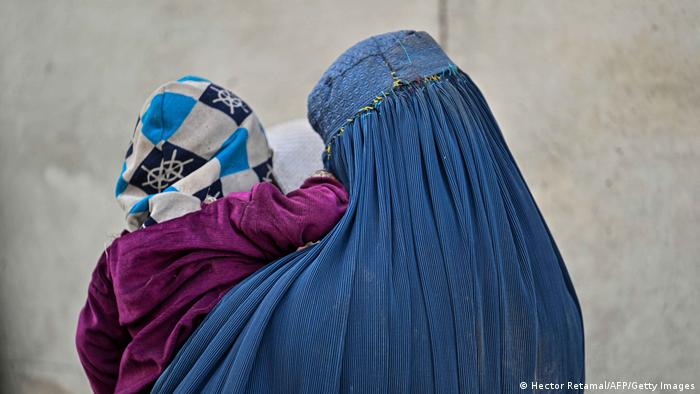With New Zealand keeping its borders closed due to COVID restrictions, pregnant journalist Charlotte Bellis has been stuck outside her home country, forced to ask the Taliban for help.

Afghanistan hospitals struggle to provide maternal care to expectant mothers (file photo)
New Zealand journalist Charlotte Bellis has said she is stuck in Afghanistan after the New Zealand government rejected her emergency application for return over coronavirus restrictions. Left without an option, she was forced to seek refuge in Taliban-led Afghanistan as a "pregnant, unmarried woman," Bellis said in an open letter published by The New Zealand Herald on Friday.
Bellis formerly worked for Al-Jazeera, which is based in Qatar. She had been covering the fallout of last summer's Taliban takeover from Afghanistan before she returned to Qatar in September. She said this was the time when she learned she was pregnant. As extramarital sex is illegal in Qatar, Bellis attempted to get back to New Zealand using a lottery-style system for returning citizens.
Unable to secure her return in that manner, she left Qatar for Belgium, the home country of her partner, freelance photographer Jim Huylebroek. With her New Zealand passport, however, she was only allowed to spend a limited time in Belgium. The couple was eventually forced to relocate to Afghanistan as they both had valid visas to stay there.
Bellis said she set up a meeting with her senior Taliban contacts and asked if her pregnancy would be a problem. She was told it would not.
"Just tell people you're married and if it escalates, call us. Don't worry," the Taliban officials said, according to Bellis.
Questioning New Zealand's treatment of its citizens
Bellis, known for asking the Taliban about their treatment of women, said she has now been forced to ask the New Zealand government the same questions.
"I am writing this because I believe in transparency and I believe that we as a country are better than this. [Prime Minister] Jacinda Ardern is better than this," Bellis wrote, explaining that she sent 59 documents to New Zealand authorities before her application for an emergency return was rejected.
Bellis said she responded by contacting her lawyer, a friend who deals in public relations and a New Zealand politician, with the information about her case eventually reaching New Zealand's COVID-19 Response Minister Chris Hipkins. Two days after her rejection, she received another email stating that her application status has been changed from "deactivated" to "reviewing application."
Bellis is due to give birth to a girl in May. She said that giving birth in Afghanistan could be a death sentence, as the country struggles with a poor state of maternity care and lack of surgical capabilities.
"I wasn't triggered by the disappointment and uncertainty, but by the breach of trust," Bellis wrote. "That in my time of need, the New Zealand Government said you're not welcome here."
Government clarifies its stance
The government of New Zealand has been increasingly questioned over its COVID policies that force even returning citizens to spend 10 days in quarantine hotels run by the military. The requirement has created a backlog of thousands of people who want to return home.
In response to Bellis' letter in the Herald, COVID response minister Hipkins said he had asked officials to check whether proper procedures were followed in her case.
The joint head of New Zealand's Managed Isolation and Quarantine (MIQ) system, Chris Bunny, said Bellis' application did not meet the "travel within 14 days" requirement currently in play for emergency entry. He said the MIQ team had reached out to Bellis to make another application that fit the requirements.
But Bellis, on Twitter, said the "MIQ has and does allow travel outside 14 days" and that the couple had outlined their reason for doing so, primarily the lack of regular flights out of the Kabul airport, in the cover letter of their application.
While Bellis' case appears to be moving forward, she said she was compelled to write the column as her story was "unique in context, but not in desperation."




/cdn.vox-cdn.com/uploads/chorus_image/image/67647498/1280719971.jpg.0.jpg)








